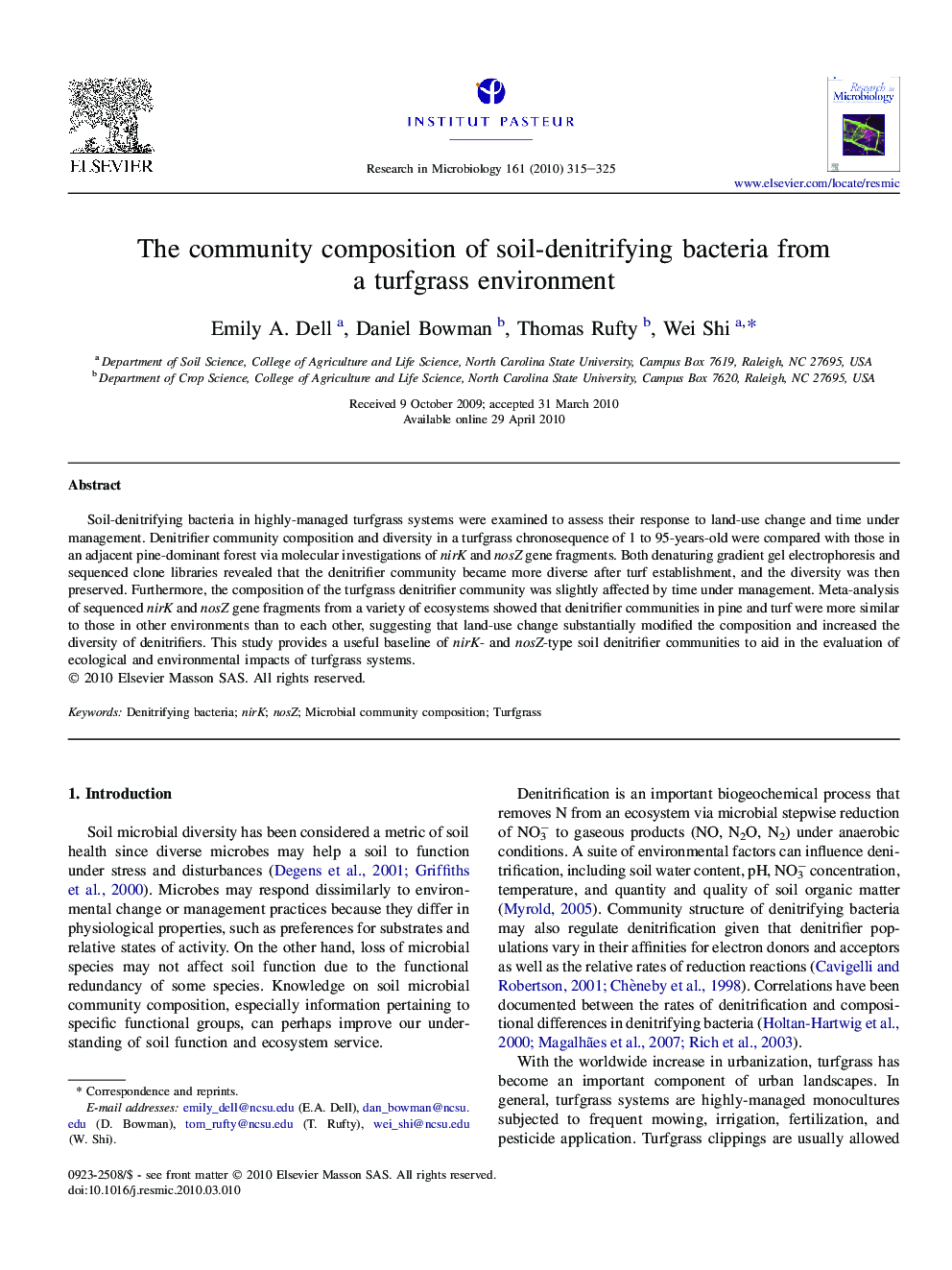| Article ID | Journal | Published Year | Pages | File Type |
|---|---|---|---|---|
| 6288147 | Research in Microbiology | 2010 | 11 Pages |
Soil-denitrifying bacteria in highly-managed turfgrass systems were examined to assess their response to land-use change and time under management. Denitrifier community composition and diversity in a turfgrass chronosequence of 1 to 95-years-old were compared with those in an adjacent pine-dominant forest via molecular investigations of nirK and nosZ gene fragments. Both denaturing gradient gel electrophoresis and sequenced clone libraries revealed that the denitrifier community became more diverse after turf establishment, and the diversity was then preserved. Furthermore, the composition of the turfgrass denitrifier community was slightly affected by time under management. Meta-analysis of sequenced nirK and nosZ gene fragments from a variety of ecosystems showed that denitrifier communities in pine and turf were more similar to those in other environments than to each other, suggesting that land-use change substantially modified the composition and increased the diversity of denitrifiers. This study provides a useful baseline of nirK- and nosZ-type soil denitrifier communities to aid in the evaluation of ecological and environmental impacts of turfgrass systems.
